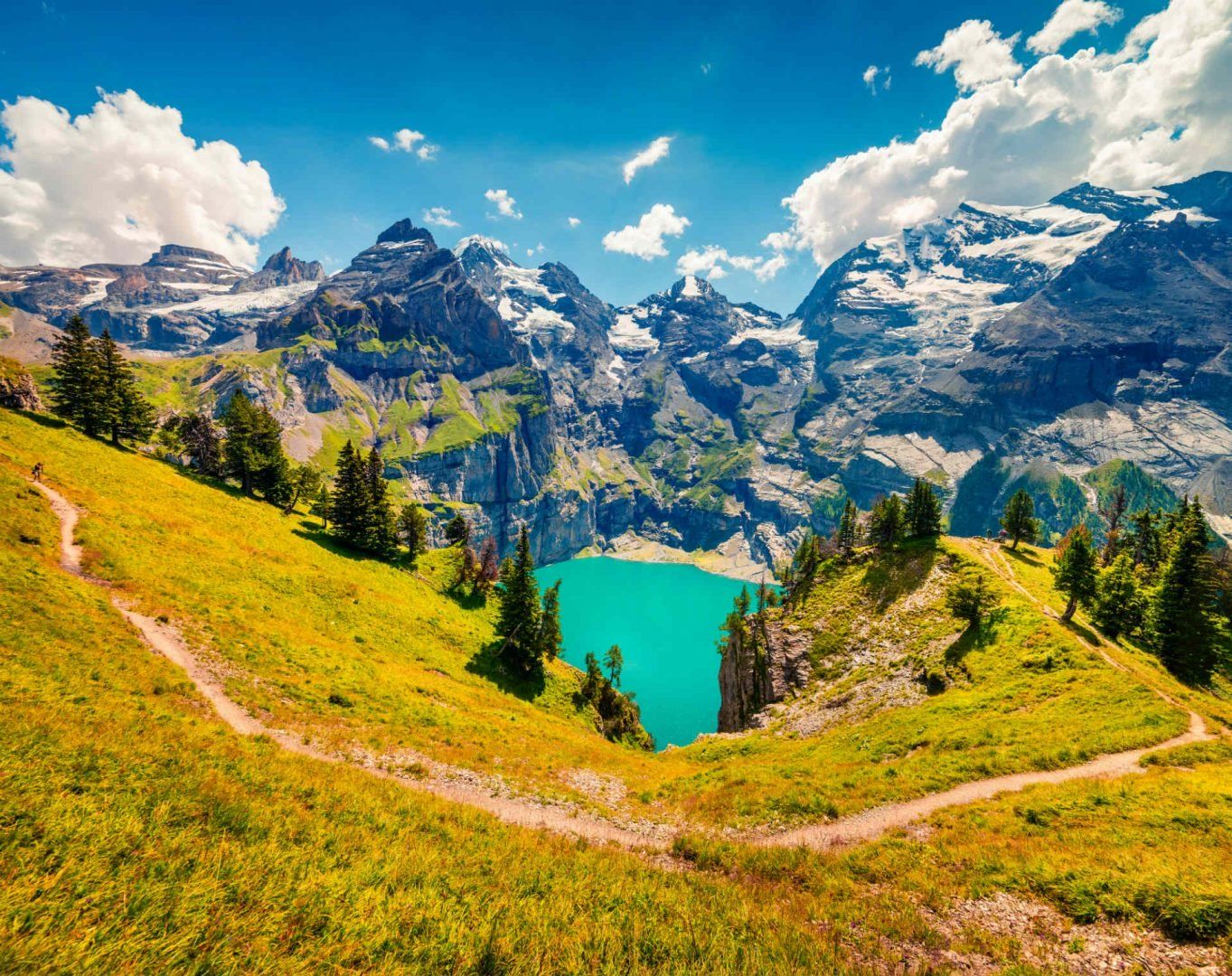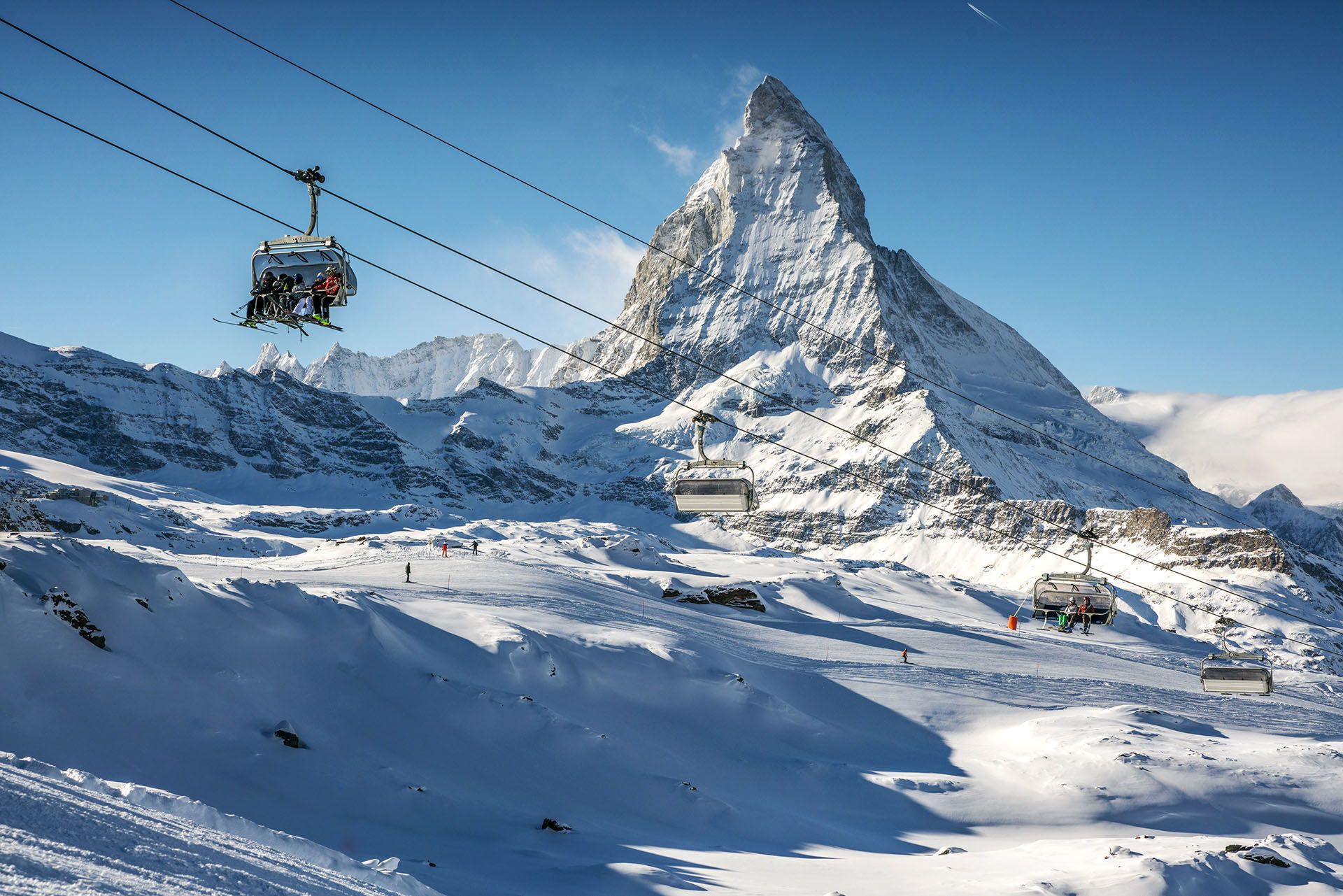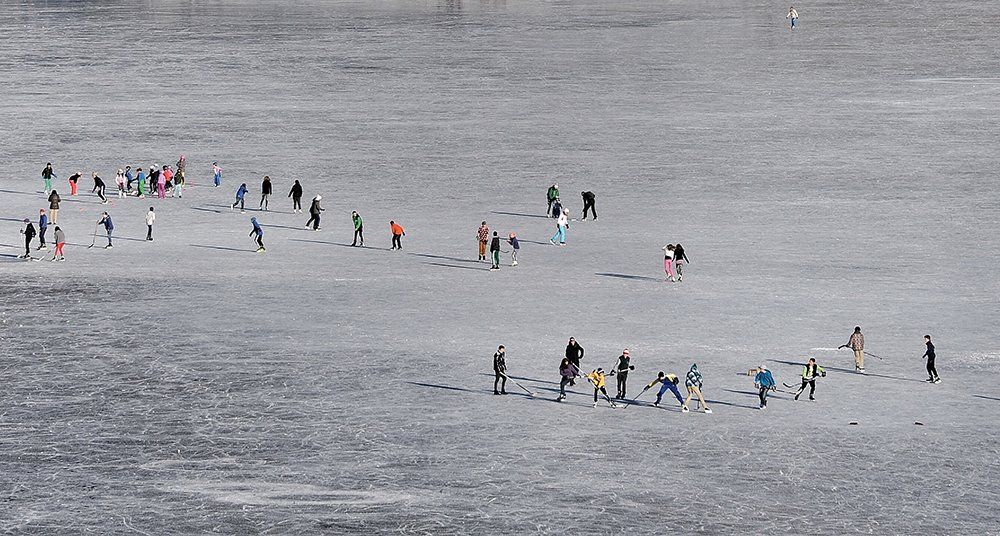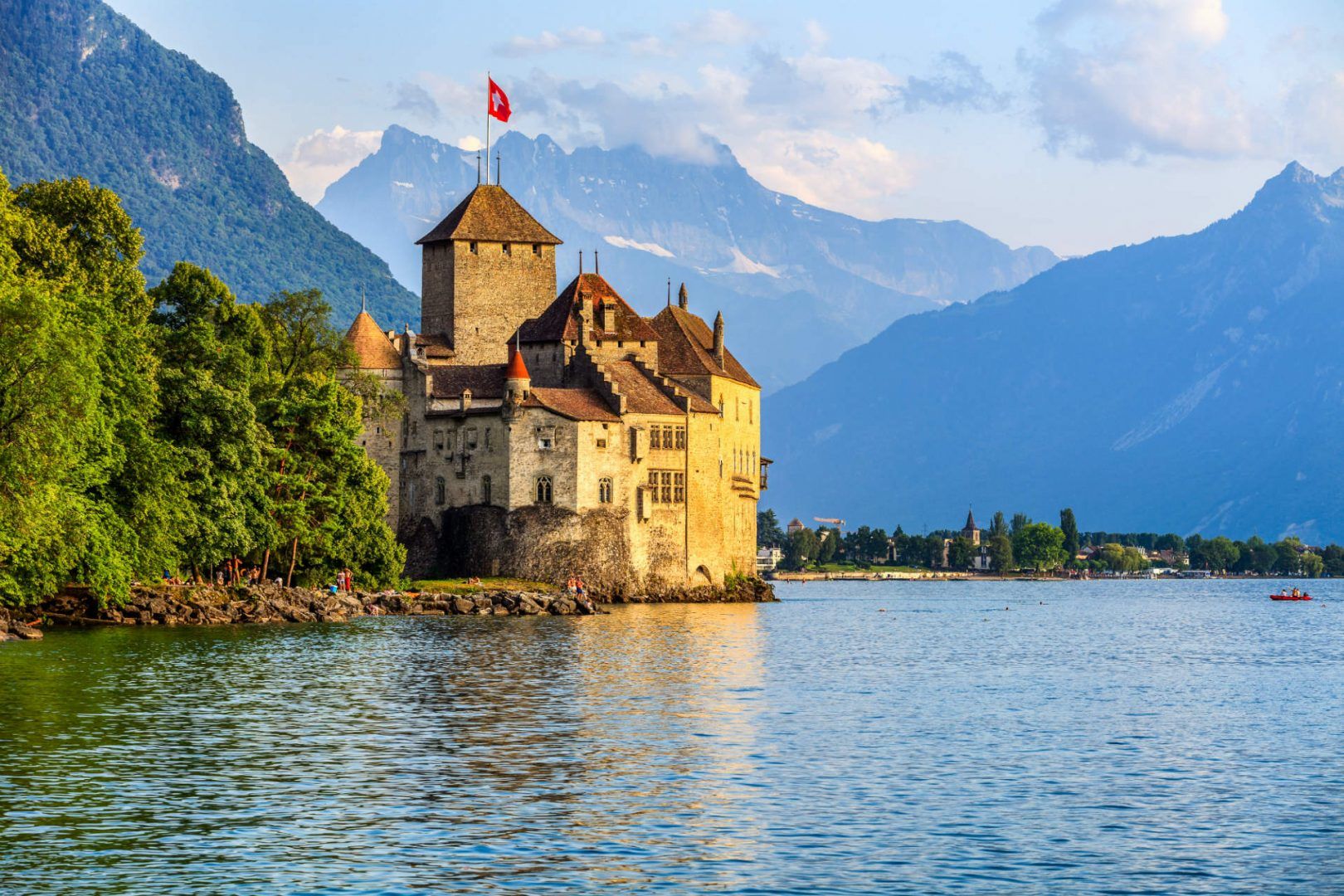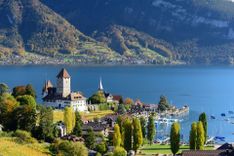22. Rafting on the Saane River
The Saane, also called the Sarine, is one of the best rivers in Switzerland for rafting because it changes so much along the way. Near Gstaad the water is calm enough for family trips, while further downstream around Zweisimmen you get waves and Grade IV rapids that are much more challenging. In between, the Simmental gorges bring tight, technical runs that keep you on your toes.
Spring snowmelt makes the river powerful and fast. By summer the levels drop and you get narrower passages with more rocks to navigate.
What makes it one of the best outdoor activities in Swizterland is how the scenery shifts in a single trip. One stretch takes you through wide alpine meadows, and before long you are in steep limestone canyons with clear green water rushing past. Sometimes you even see trout swimming below the surface.
Guides usually share stories about the region as they steer through rapids with names like Washing Machine and Devil’s Throat. Trips often end with a relaxed barbecue and a beer by the river.
How to get to Saane River rafting
Most rafting companies arrange transport from Interlaken, Gstaad, or Zweisimmen to the river. Some sections are easy to reach by public transport using the MOB railway. All the gear is provided. Since different stretches suit different skill levels, let the company know what kind of run you are looking for when you book.
When to visit for Saane rafting
May and June bring the fastest water. July and August are warmer and more stable, which is better if you are new to rafting. September is quieter and you get autumn colors along the river. During heavy snowmelt some areas can be unsafe, and guides will decide what is possible. Wetsuits keep the cold water comfortable.
23. Five Lakes Walk, Zermatt
The Five Lakes Walk is a 5.5 mile (9 km) trail that links five alpine lakes, each with its own view of the Matterhorn. You start from Blauherd and pass Stellisee, Grindjisee, Grünsee, Moosjisee, and Leisee before finishing at Sunnegga.
Every lake feels a little different. Stellisee is known for its mirror-like reflections in the early morning. Grünsee is off the main path and feels quieter than the others.
The walk is mostly downhill and easy to follow. It still feels wild enough that you might see marmots along the way. In July the meadows are filled with wildflowers, and by late September the larch trees around the lakes turn gold.
Because the trail links with the cable car system you get big mountain views without a tough climb. Bringing food is a good idea since there are plenty of places by the lakes where you can sit down for a picnic.
How to get to Five Lakes Walk
Take the cable car from Zermatt to Blauherd via Sunnegga to reach the start. The route ends back at Sunnegga, where you can take the funicular to town. The path is clearly marked, but you should have sturdy shoes. If you want to see Stellisee at its best, head out early when the water is calm. Maps are available at the tourist office.
When to visit Five Lakes Walk
The trail is best between July and September when the lakes are free of ice and the paths are clear. Early July is good for flowers, while late September brings golden larch trees. Mornings usually give you the clearest reflections, though clouds can cover the Matterhorn quickly. August is the busiest time, and Stellisee can be crowded by midday, so starting early makes a difference.


